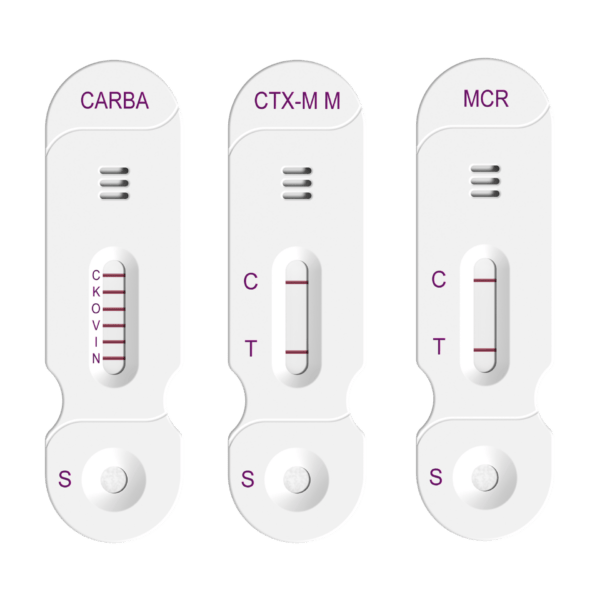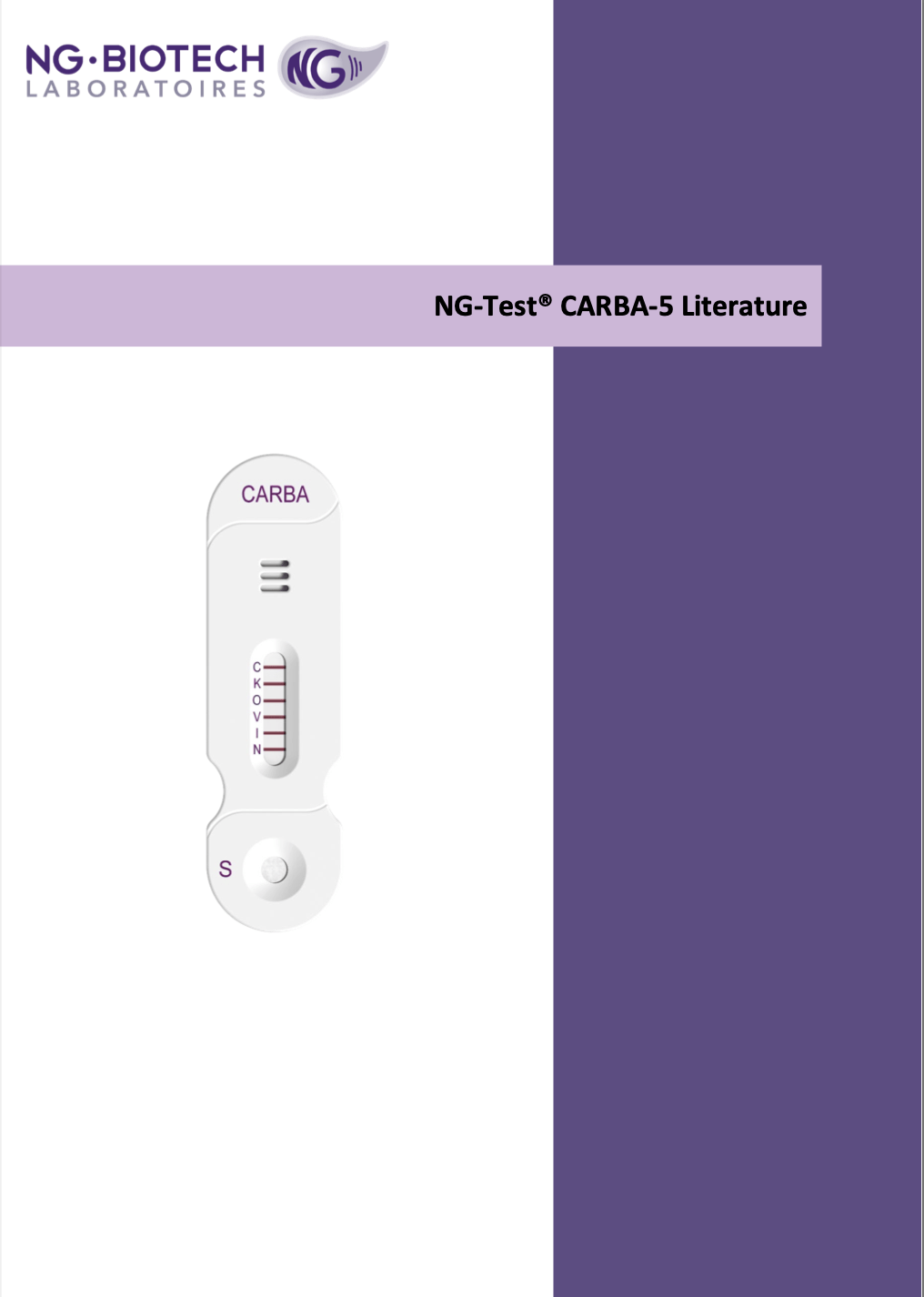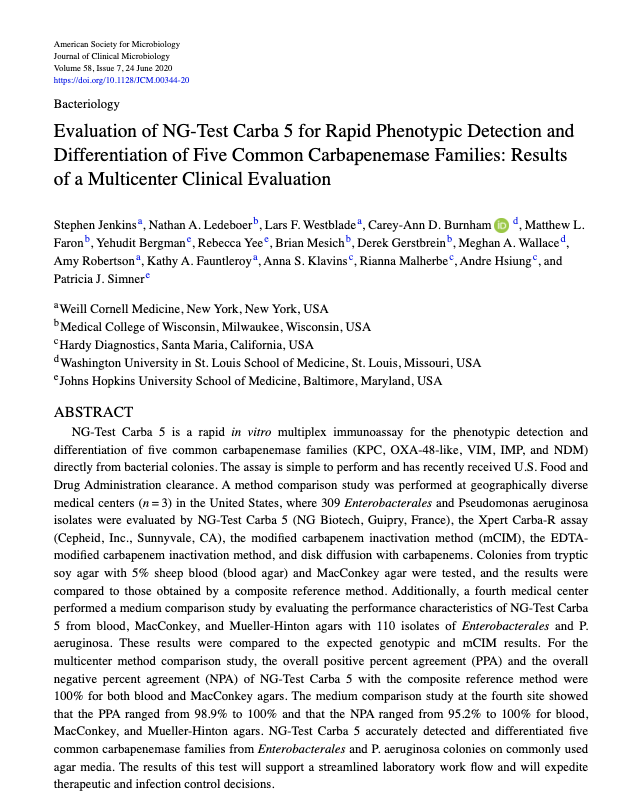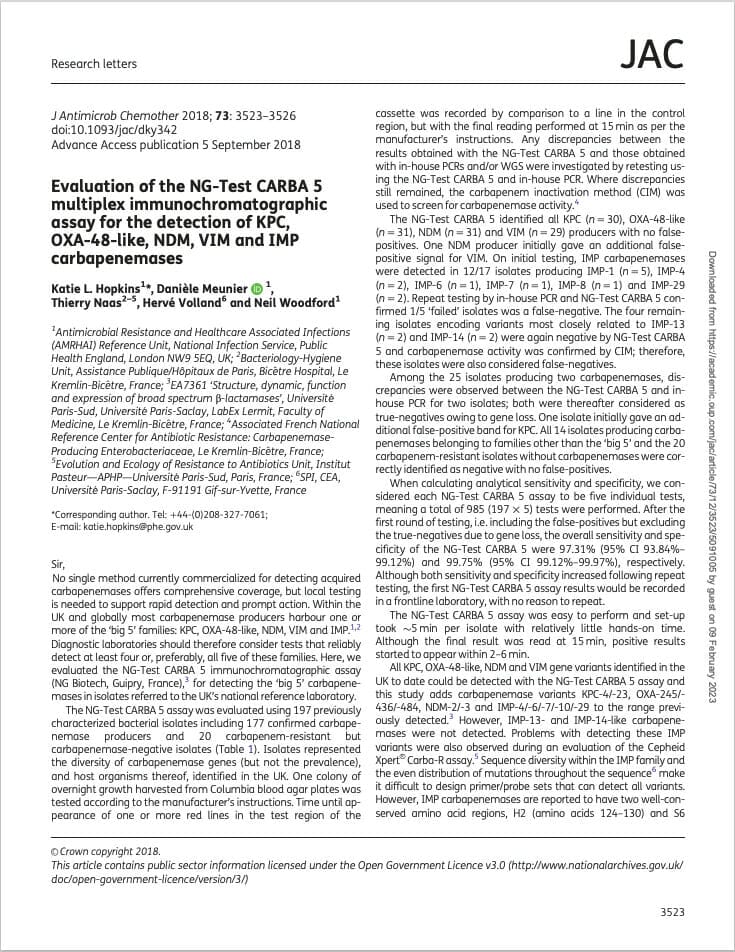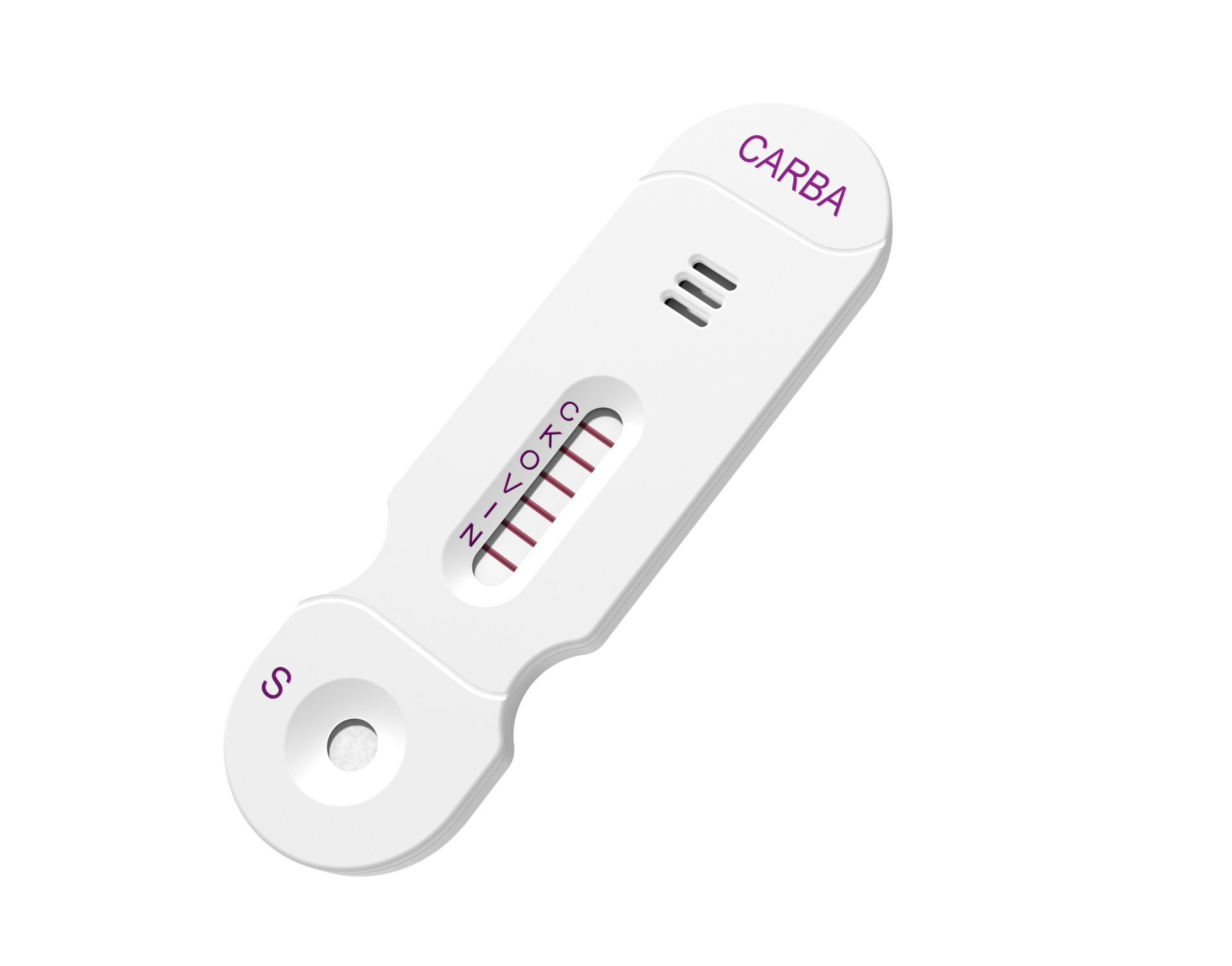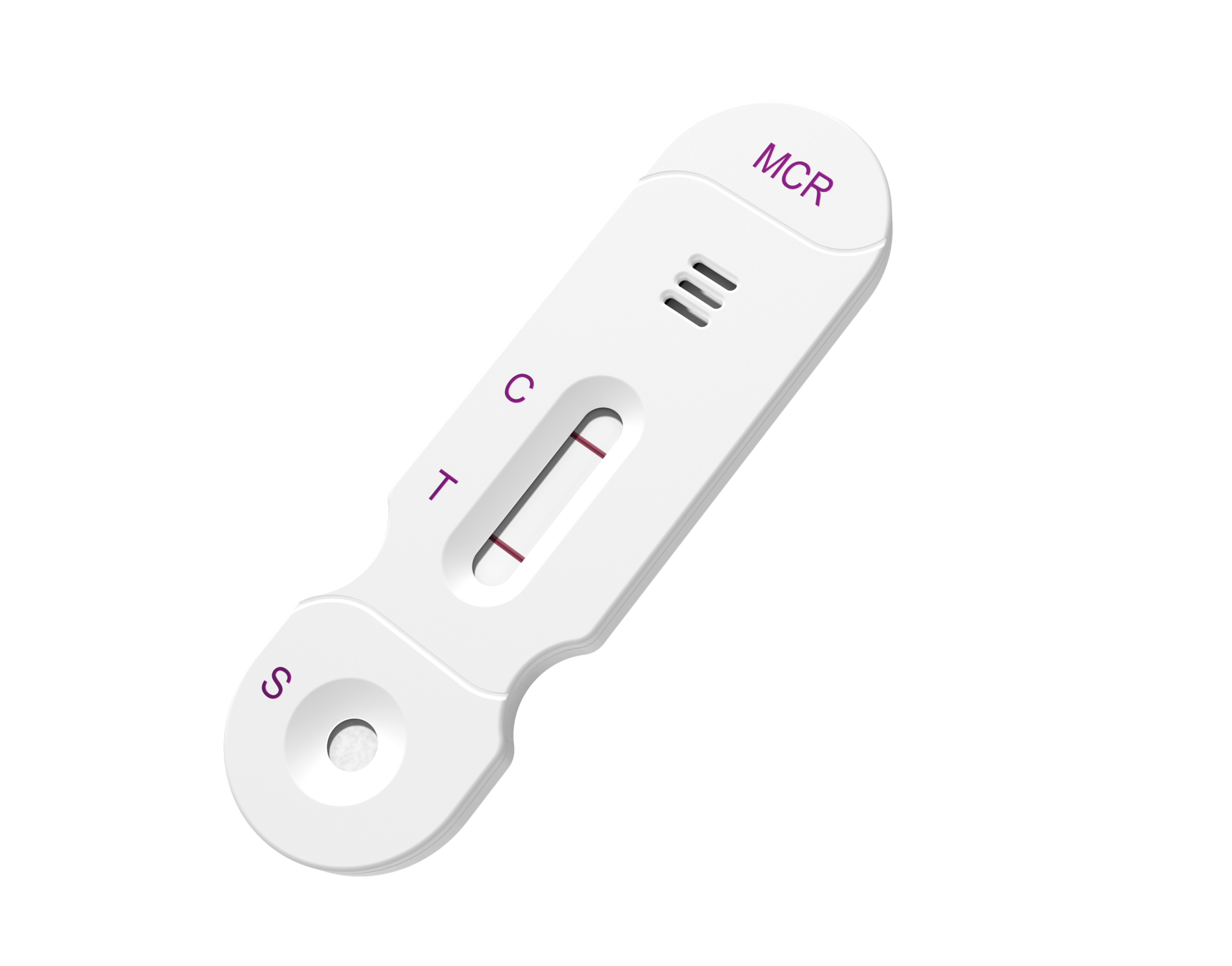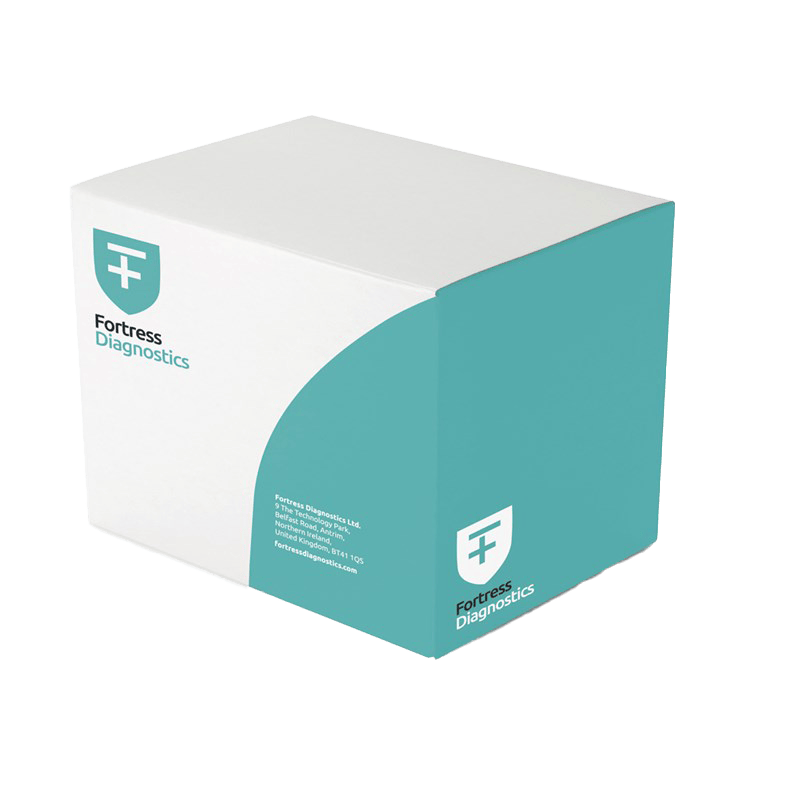NG Biotech AMR Range
Ensuring appropriate use of tailored antibiotics and supporting antimicrobial stewardship.
Una Health are committed to becoming an advocate for change in response to the global threat of AMR.
The range of tests from NG Biotech have been developed in collaboration with the French CEA and are a new range of rapid tests for Antimicrobial Resistance (AMR) detection from cultured colonies. These cutting-edge antimicrobial resistance tests enable rapid detection in just 15 minutes with results you can trust. The patented new multi-layer, multi conjugate lateral flow platform utilised across the NG AMR product range increases the capacity of key biomarkers, whilst maintaining the high quality of detection.
Product Overview
A range of rapid tests for detection of antimicrobial resistance mechanisms direct from bacterial cultures.
The NG-Test AMR platform is a visual, multiplex lateral flow immunochromatographic assay, developed using patented technology. Each single use cassette offers rapid, qualitative detection and differentiation of different antimicrobial resistance mechanisms among non-susceptible colonies of Gram-negative bacteria.
NG-Test CARBA 5 aids in the rapid identification of carbapenemase-producing Enterobacterales and Pseudomonas aeruginosa in healthcare settings.
NG-Test CARBA-5 detects one or more of the five common types of carbapenemase enzymes (KPC (K), OXA-48-like (O), IMP (I), VIM (V), NDM (N)) from carbapenem-non-susceptible Gram-negative bacterial colonies.
The production of beta-lactamases, enzymes that degrade the beta-lactam ring of the beta-lactam family of antibiotics, are a common resistance mechanism found in Gram-negative bacteria, particularly Enterobacterales.
There are different classes of beta-lactamase, each of which has a different spectrum of activity. The CTX-M class of beta-lactamases is important due to the extended spectrum of activity against penicillins and cephalosporins, including third generation cephalosporins. This makes Gram-negative bacteria that carry CTX-M enzymes more difficult to treat, requiring broader spectrum agents, such as piperacillin/tazobactam.
The NG Biotech CTX-M MULTI test is an important tool that identify one of the important mechanisms of resistance to cephalosporins commonly found in Enterobacterales and inform appropriate prescribing antimicrobial stewardship.
NG-Test CTX-M multiplex detects variants belonging to all five known CTX-M groups: 1, 2, 8, 9 & 25.
In terms of multidrug-resistant Gram-negative bacteria, colistin may be the only antibiotic to which the bacteria exhibit susceptibility, making it the last option available for treatment.
Colistin resistance is intrinsic in some bacterial species, such as Serratia and Proteus species. Resistance to colistin may arise due to chromosomal mutations; however, the advent of colistin resistance associated with a mobile genetic element (plasmid) is of serious concern.
The mcr gene, mobilised colistin resistance, encodes a phosphoethanolamine transferase that modifies the structure of the outer membrane of Gram-negative bacteria and decreases the activity of colistin against bacterial cells. The carriage of the mcr gene on mobile genetic elements means that there is a risk that colistin resistance will spread among other bacteria, including those that are resistant to all other classes of antibiotic.
The NG-Test MCR-1 test is an important tool that identifies an important mechanism of resistance to colistin to inform appropriate prescribing #antimicrobialstewardship and infection prevention actions.
See Resources for hyperlinks to more relevant information.
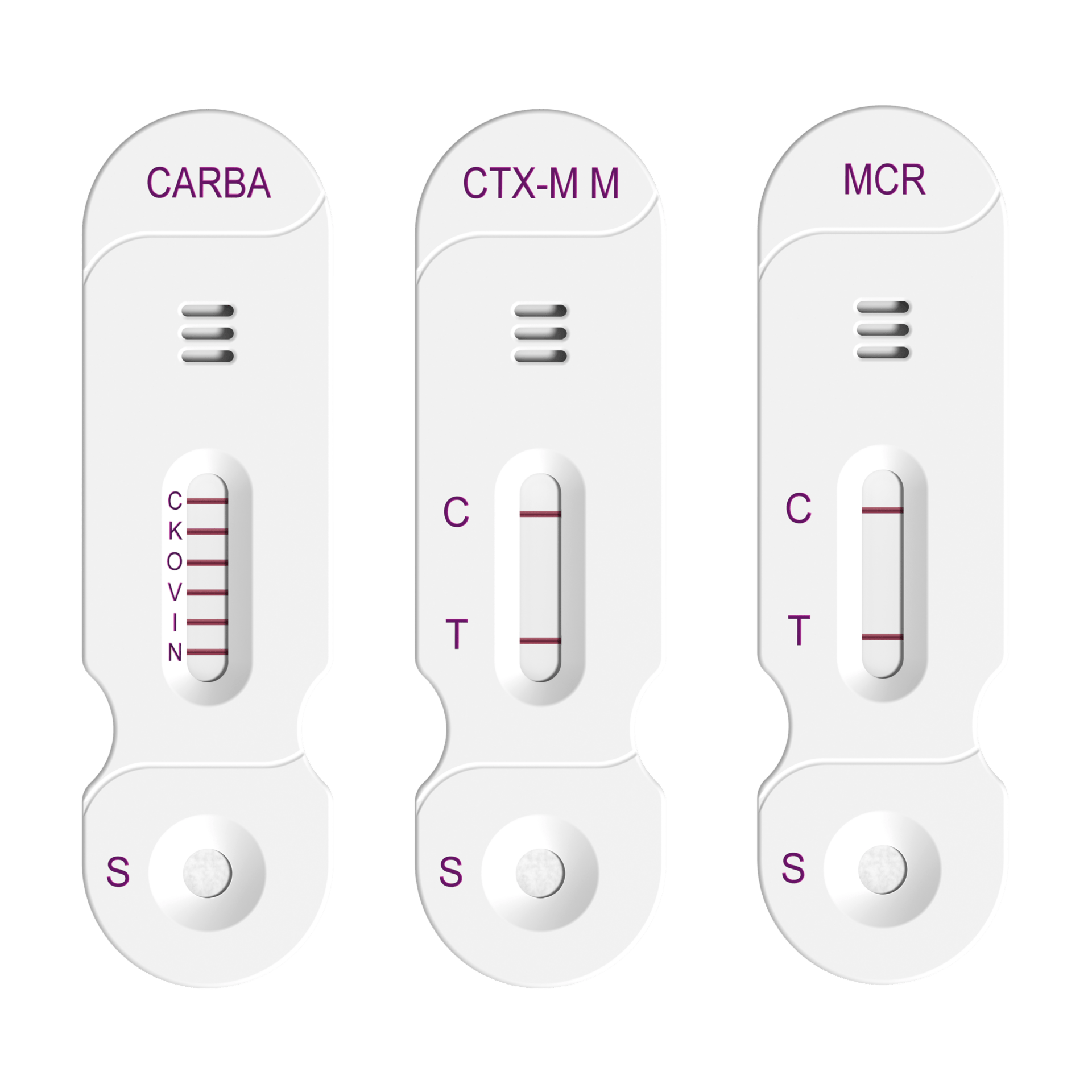
How the NG-Test AMR test platform works
The NG-Test AMR platform is based on lateral flow immunochromatographic principles:
- Monoclonal antibodies that individually recognize each of the antimicrobial degrading enzymes (carbapenemases OR extended spectrum β-lactamases OR phosphoethanolamine transferase) are immobilized onto a nitrocellulose strip.
- Free (mobile) monoclonal antibodies are present in the conjugate pad and labelled with colloidal gold.
- When bacterial colonies are mixed with the extraction buffer and added to the sample pad, the capillary action of the nitrocellulose draws the lysed bacterial cell suspension through the mobile labelled-antibodies on the conjugate pad.
- If present in the suspension the target analyte will bind with the mobile labelled-antibodies and the molecular complex will move towards the immobile antibodies present on the test lines.
- If the target is not present in the suspension, the mobile labelled-antibodies will move along the test strip.
- If the target analyte is present in the suspension, the mobile labelled-antibodies+ target analyte molecular complex will be captured by the immobile antibodies present on the test line/s and a change in colour at the test line will occur.
- If the target is not present in the suspension, the mobile labelled-antibodies will not be captured by the immobile antibodies at the test lines but will continue along the strip and be captured by the control line, causing a change in colour at the control line only.
How to interpret results
- A positive result: a red line appears on the control region (C) and one or more lines appear in the test regions and indicates that the bacterial suspension contains the particular antimicrobial degrading enzyme under investigation.
- A negative result: red line appears on the control region (C) with no lines in any of the test regions and indicates that the bacterial suspension does not contain the antimicrobial degrading enzyme under investigation.
- If the control line does not appear, the test result is invalid.
How the NG-Test AMR test platform helps
Rapid detection of antimicrobial resistant bacteria is paramount to a patient receiving appropriate treatment in a timely manner and is necessary to inform infection prevention actions.
The NG Biotech range offers the following AMR tests:
- CARBA-5 for rapid detection of carbapenemases
- CTX-M Multi for rapid detection of the CTX-M family of extended spectrum beta-lactamases (ESBL)
- MCR-1 for rapid detection of mobilised colistin resistance
The NG Biotech lateral flow kits offer equivalent results to molecular detection methods in a fraction of the time, with no need for additional equipment and associated maintenance costs. Hands on time to prepare the test is minimal and results are available to read in 15 minutes.
How to use the NG Biotech AMR Tests
The general procedure for all the NG AMR tests is similar:
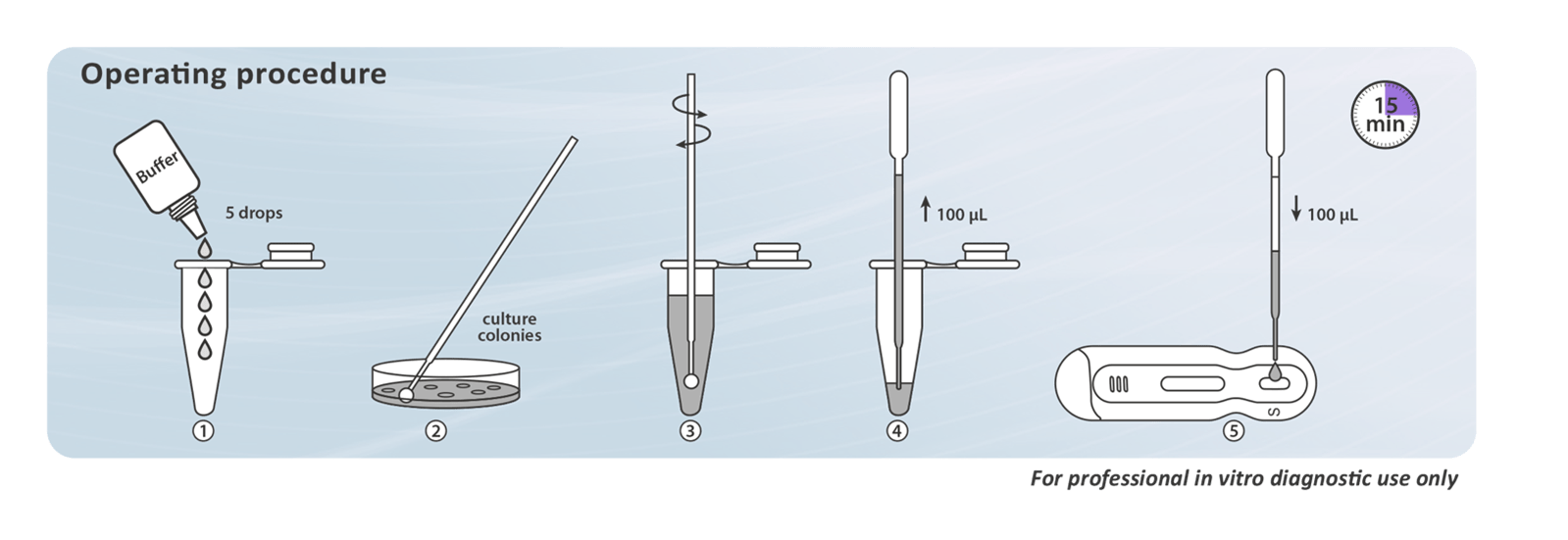
How to interpret results
- A positive result: a red line appears on the control region (C) and one or more lines appear in the test regions and indicates that the bacterial suspension contains the particular antimicrobial degrading enzyme under investigation.
- A negative result: red line appears on the control region (C) with no lines in any of the test regions and indicates that the bacterial suspension does not contain the antimicrobial degrading enzyme under investigation.
- If the control line does not appear, the test result is invalid.
Please see below for hyperlinks to relevant resources
NG Biotech AMR – Selection of peer reviewed publications about the NG Tests
White Paper – Lateral flow testing in an antimicrobial resistance pandemic
NG Test® CARBA-5 – Supporting Resources
UK Health Security Agency Report: Commercial assays for the detection of acquired carbapenemases
Journal of Clinical Microbiology (ASM Journals): Evaluation of NG-Test Carba 5 for Rapid Phenotypic Detection and Differentiation of Five Common Carbapenemase Families: Results of a Multicenter Clinical Evaluation (2020)
Oxford Academic, Journal of Antimicrobial Chemotherapy: Evaluation of the NG-Test CARBA 5 multiplex immunochromatographic assay for the detection of KPC, OXA-48-like, NDM, VIM and IMP carbapenemases (2018)
Una Health AMR Webinar – Detection of Carbapenemases

